Winter can take a toll on your landscape in many ways, from sudden cold snaps to drying winds, freeze/thaw cycles to hungry wildlife.
While plants that are hardy to your region should survive cold weather just fine, sometimes the damage caused by the extremes of winter isn’t evident on your trees and shrubs until they break dormancy in spring.
If you’ve just planted perennials in the garden or want to help your woody plants avoid dehydration, frostbitten roots, dead branches, and chewed bark, here are six things you can do in fall to protect trees and shrubs before we head into winter.
Disclosure: If you shop from my article or make a purchase through one of my links, I may receive commissions on some of the products I recommend.
Tip #1: Plant the right varieties for your climate.
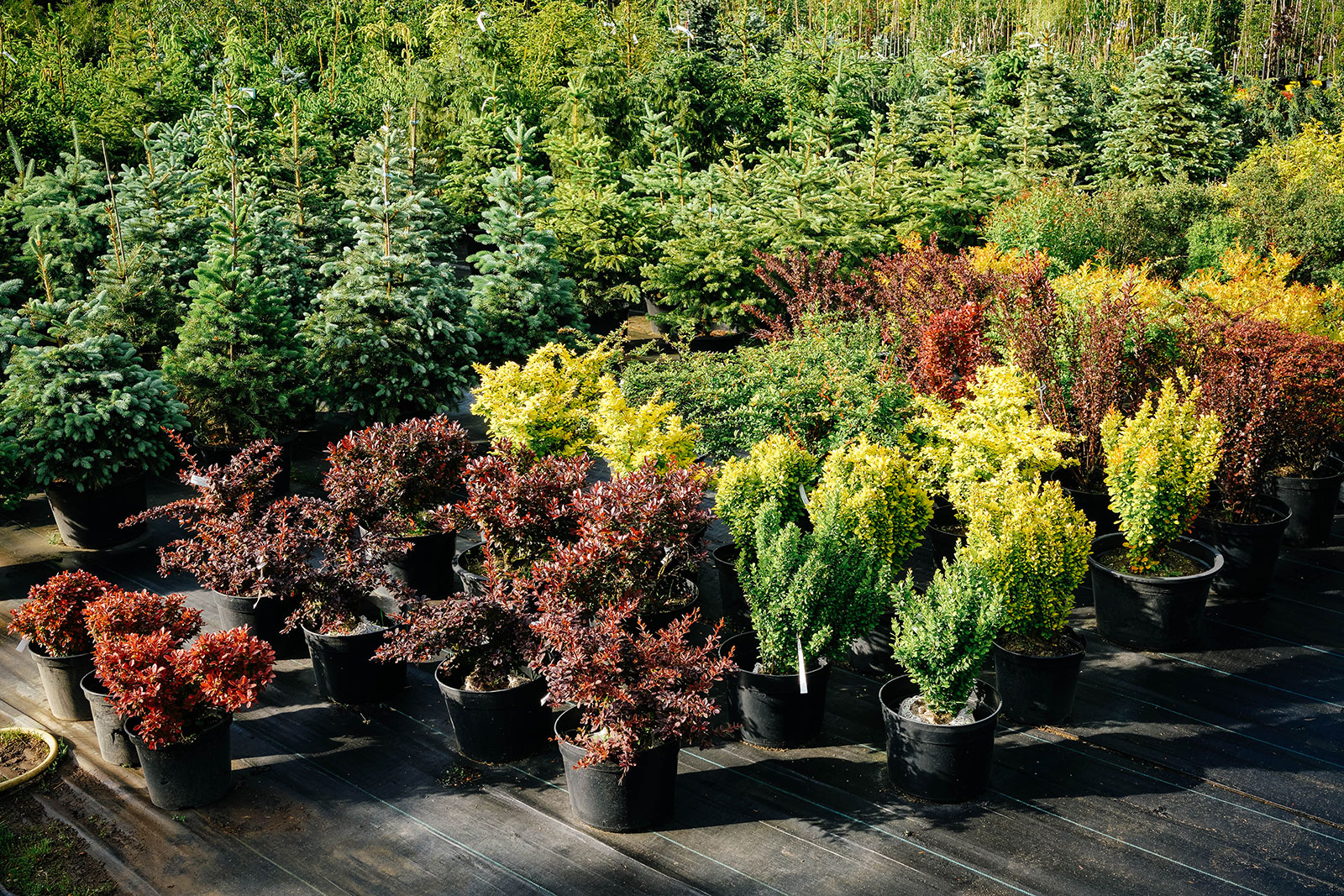
The best way to help your trees and shrubs survive winter is to plant species and varieties that are appropriate for your climate (for example, hardy Hibiscus vs. tropical Hibiscus if your area gets frost).
That said, don’t be fooled by what’s sometimes sold at your local garden center or nursery. They aren’t always hardy to your climate! I like to visit nurseries where the trees have sat outside all winter (or a couple of winters) and are well-acclimated, so they’re less likely to suffer transplant shock.
Pay attention to the plant tags and select plants that fall within your USDA hardiness zone—if not one or two zones colder to account for the microclimate in your yard. This ensures the tree or shrub can take the most extreme weather in your area with little maintenance.
For example, my official zone in Bend, Oregon, is 6b, but my part of town is more like zone 5. To play it safe, I only grow plants that are hardy to zones 5 or lower, as I’ve lost many supposedly hardy plants to our long winters and unpredictable frosts.
One of my favorite online nurseries, FastGrowingTrees, lets you enter your zip code before it shows you all the trees and shrubs that are suited to your climate. I often choose species that have a lower temperature range, so for zone 6b, I order plants that are hardy to zones 3 to 6, for instance.
Tip #2: Keep your plants well-watered, even in winter.
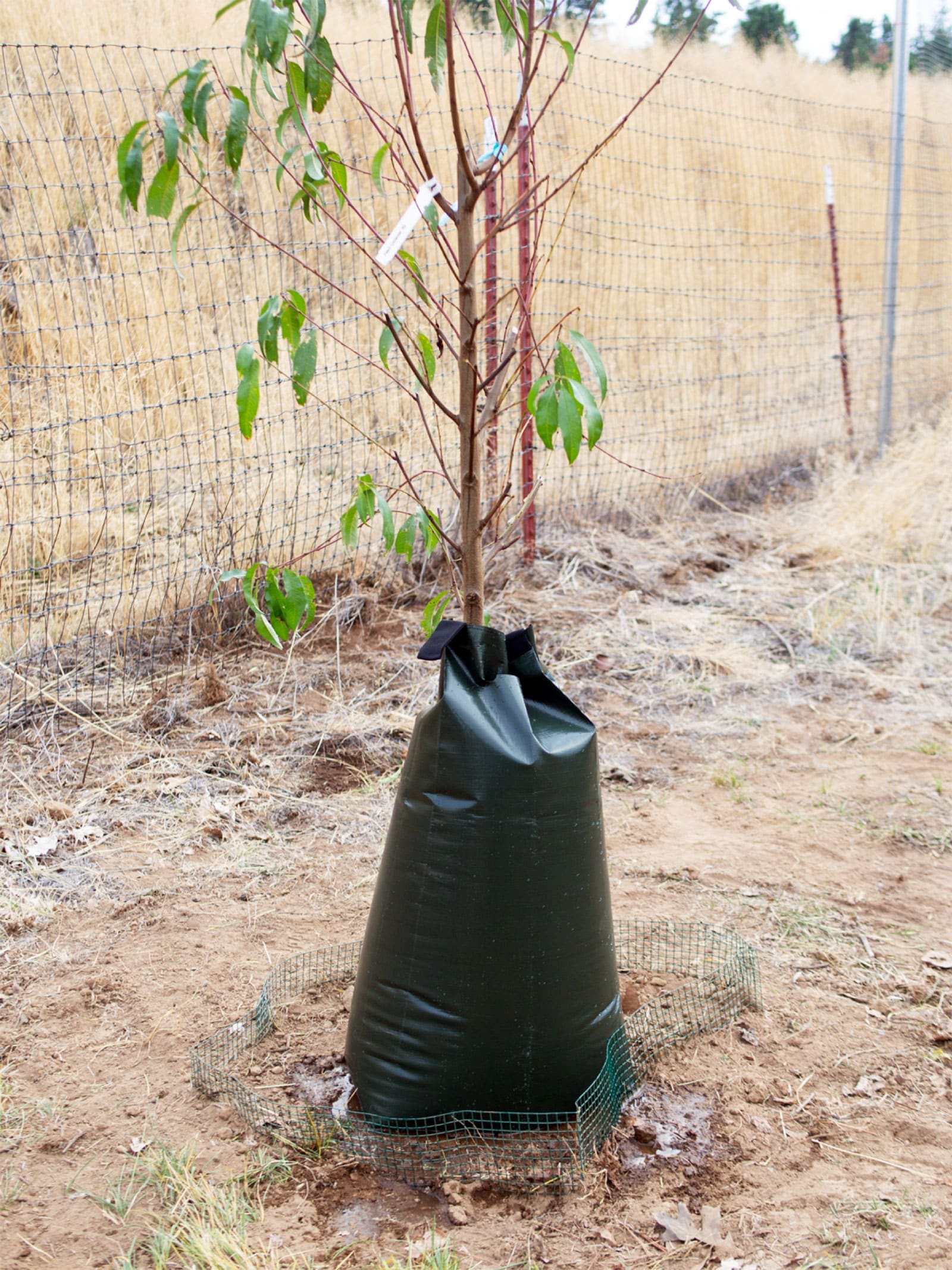
Most gardeners understand the need to water consistently and deeply during the warmer months, but it’s just as critical to water trees and shrubs as you head into the colder months (especially if you live in a drier climate). Even if it rains, a few sprinkles here and there aren’t enough to give your plants a good drink.
Established trees require the top 6 to 10 inches of soil to be moist for adequate growth, and a general rule of thumb to keep in mind is 10 gallons of water for every inch of the tree trunk’s diameter.
If you don’t have a drip irrigation system set up for your tree, I recommend a tree watering bag like this one—it’s the same one I used when I planted 14 trees in my orchard, and makes it really simple to water a lot of trees in a short period (without standing there with a hose the whole time).
Newer trees that you’ve just planted in fall are still establishing their root systems, so they need more water than you might think.
Best practice is to water a newly planted tree once a day for the first couple of weeks so that the top 4 to 6 inches of soil is nicely saturated, then once a week (or as needed) until the ground is frozen solid.
If the ground doesn’t freeze and your winters are relatively dry, check the soil at least once a month to make sure your trees and shrubs have enough moisture.
Tip #3: Insulate the roots from temperature swings.
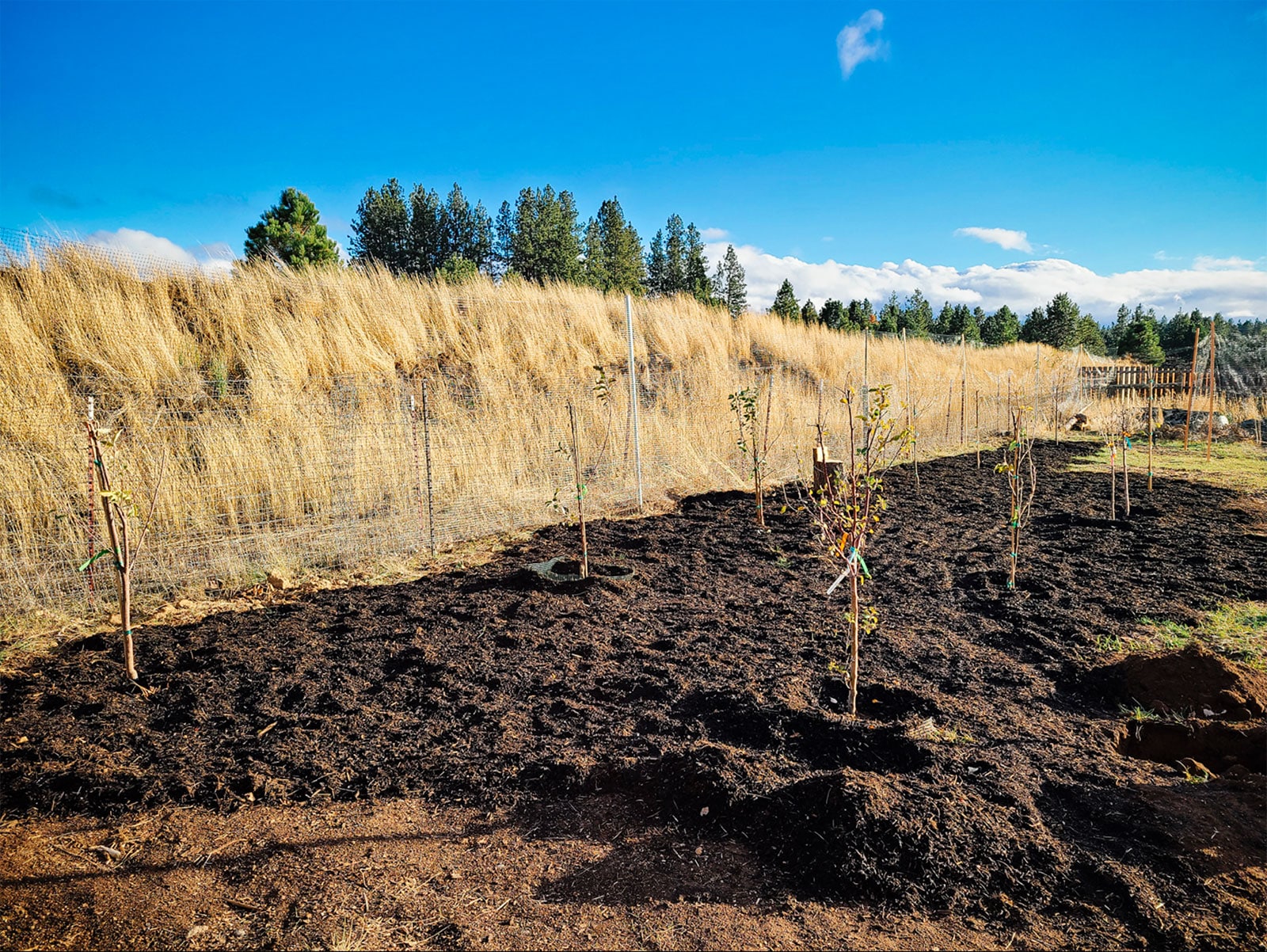
Certain trees and shrubs are very sensitive to fluctuating soil temperatures, especially trees and shrubs that are newly planted.
If you live in a climate where the ground freezes, repeated freeze/thaw cycles (which happen when nighttime temps drop to freezing but daytime temps warm enough to thaw the soil) can cause frost heaving.
During a frost heave, the soil gets pushed up due to an accumulation of ice. This also displaces plant roots, which may end up exposed and susceptible to desiccating winter winds.
Good snow cover can help insulate roots and moderate soil temperature, but many areas can’t rely on consistent heavy snow all winter. To create a layer of insulation (no matter how little snow you may get), apply a 3- to 4-inch layer of organic mulch over the root zone of your trees and shrubs.
Some good choices include wood chips, shredded bark, compost (yes, compost on its own makes an excellent mulch), straw, and leaves—so don’t be afraid to let the leaves be on your deciduous plants!
Leaf litter is highly beneficial as (free!) mulch, enriches the soil as it decomposes, and provides habitat for small wildlife and nesting material for birds and squirrels.
Just remember to leave a few inches of space between the mulch and the base of your tree. Piling up a layer of deep mulch against the trunk or stem (effectively burying part of the trunk and creating a “volcano”) can lead to disease and decay due to the excess moisture.
Not to mention, making a mulch volcano often means neglecting to put mulch over the rest of the root zone, where it’s most important.
Tip #4: Shelter trees and shrubs from wind damage.
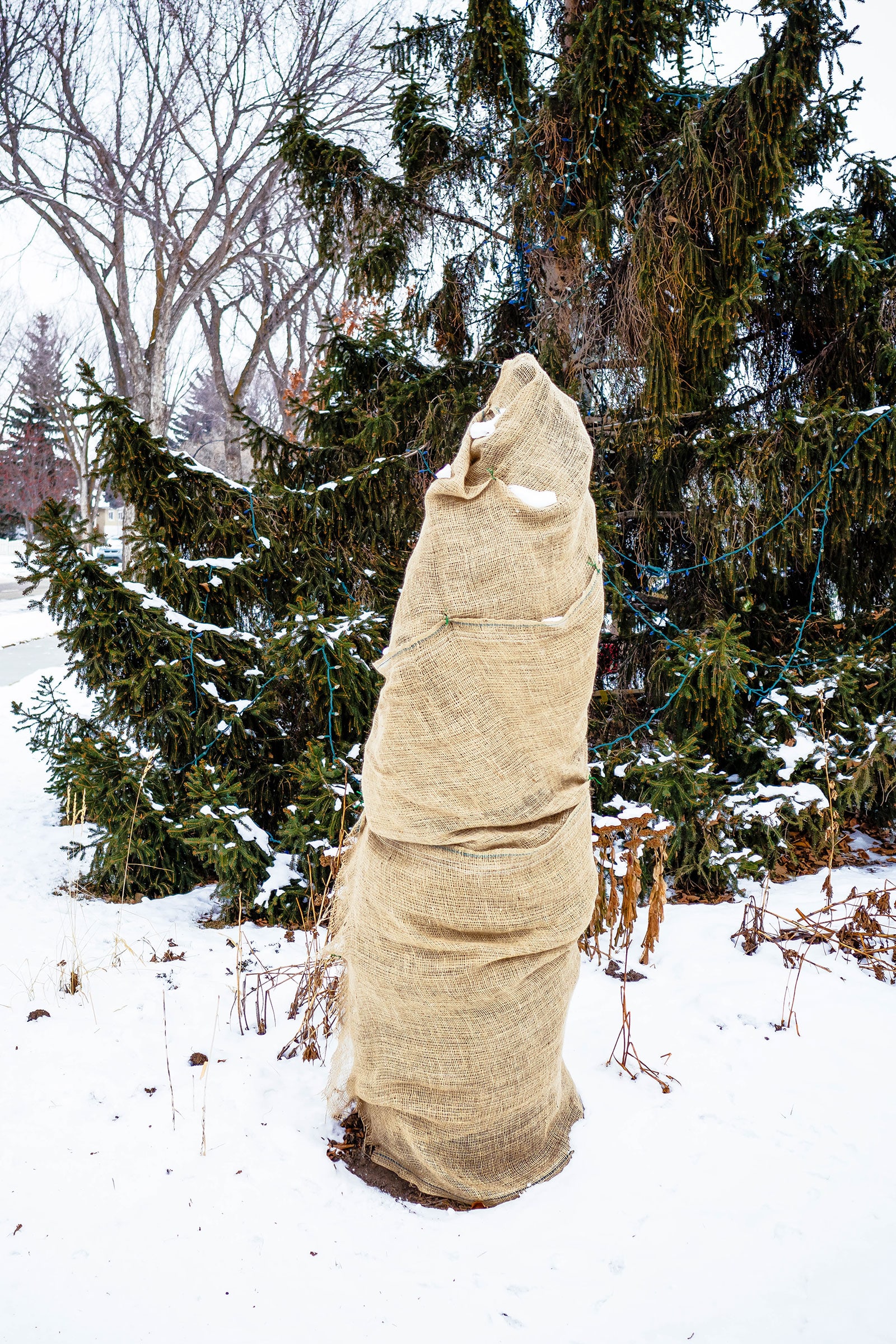
For some plants, it’s not the cold that causes damage—it’s the wind.
Certain conifers (like pines and spruces) and broadleaf evergreens (like rhododendron and boxwood) slow their growth during winter but don’t fully go dormant. This makes them more vulnerable to dry, cold, sweeping winds, which draw moisture from stems and leaves, causing the cells in those stems and leaves to break down.
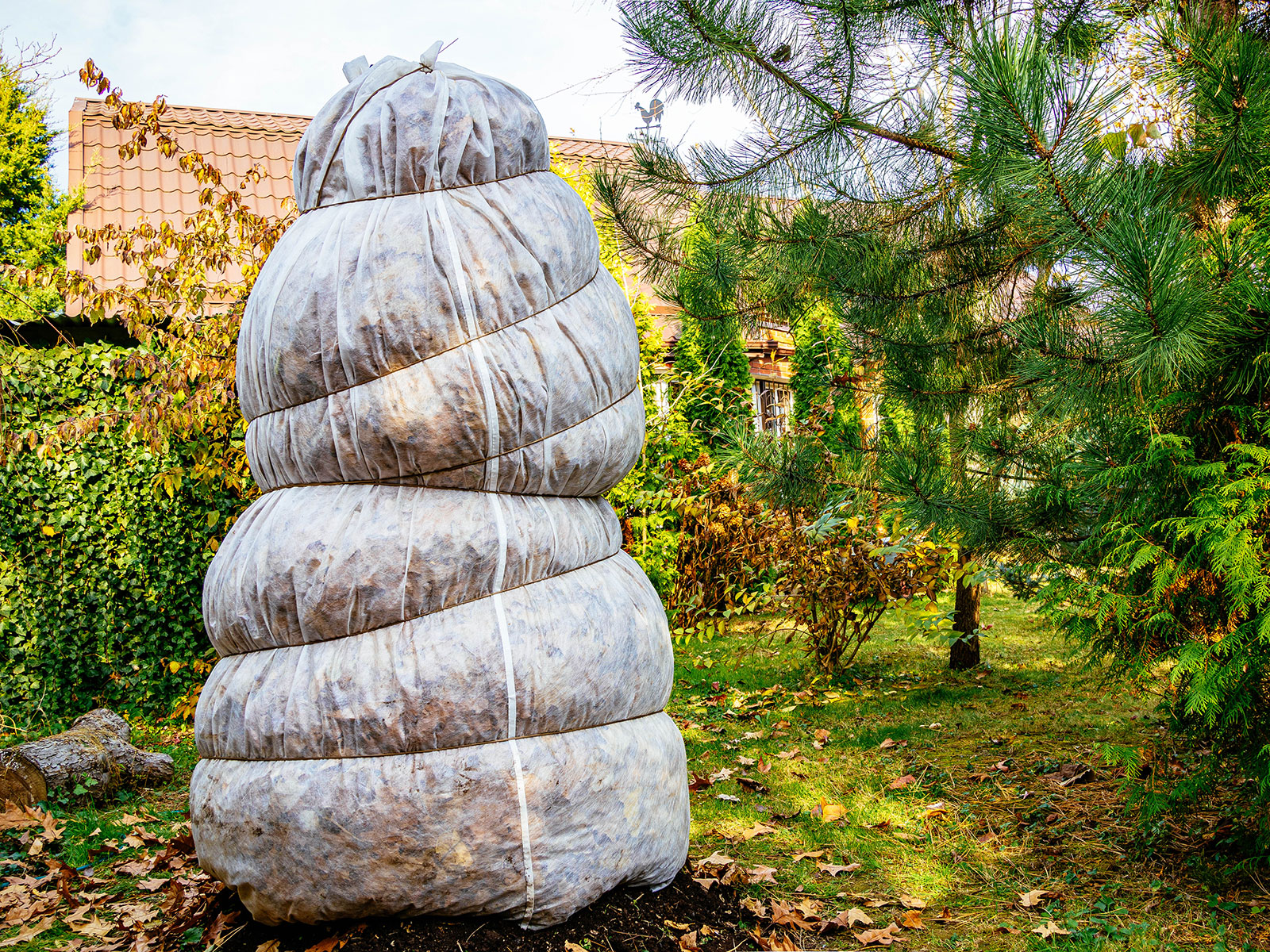
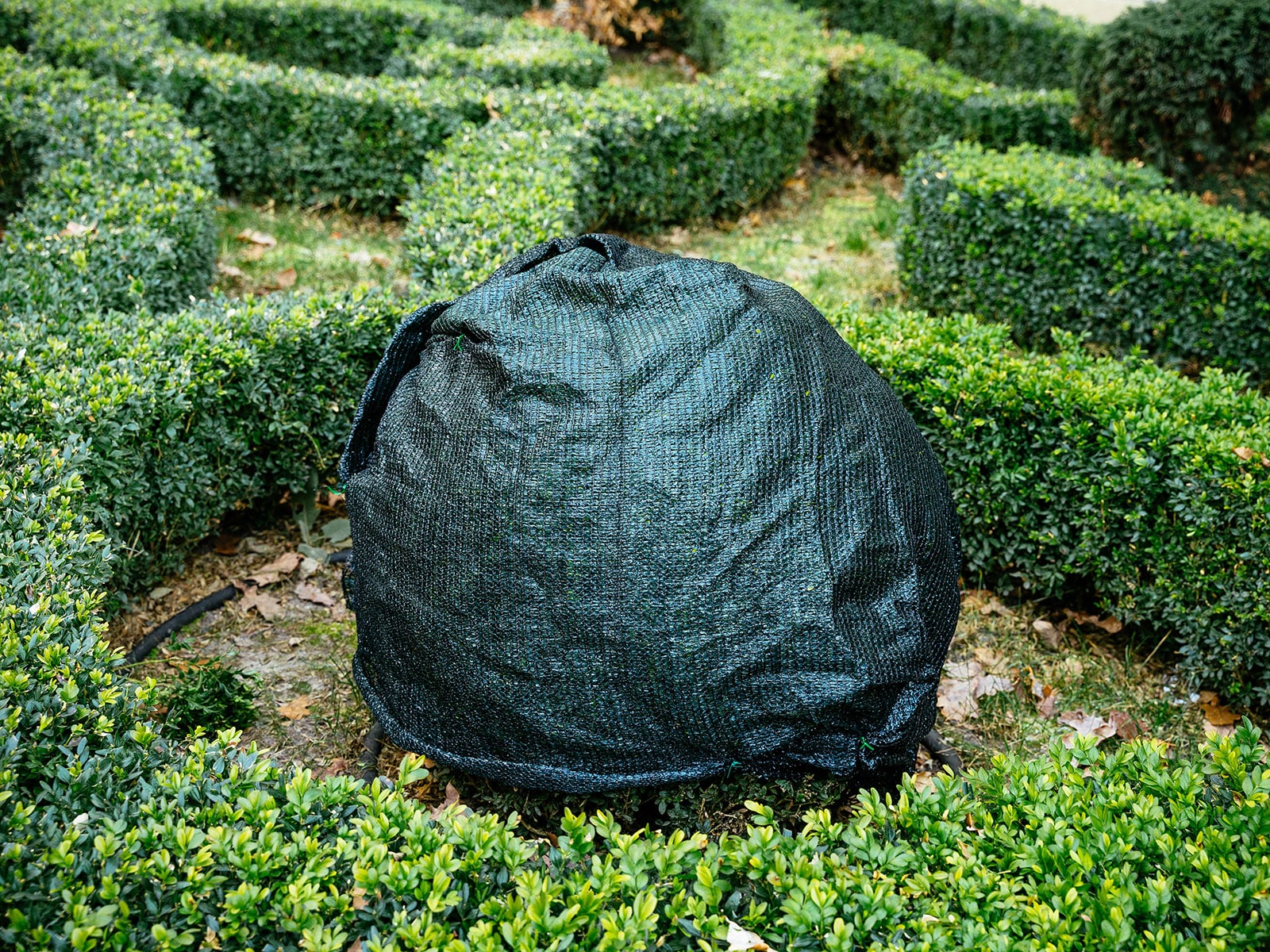
If your yard is prone to windy conditions, consider wrapping burlap or frost blankets around small conifers and shrubs to protect them in winter. You can also find “shrub jackets” on the market, which come with drawstrings so you can easily slip the covers over your plants and cinch them closed.
Recommended
Wind protection
Tip #5: Protect thin-barked trees from sunscald.
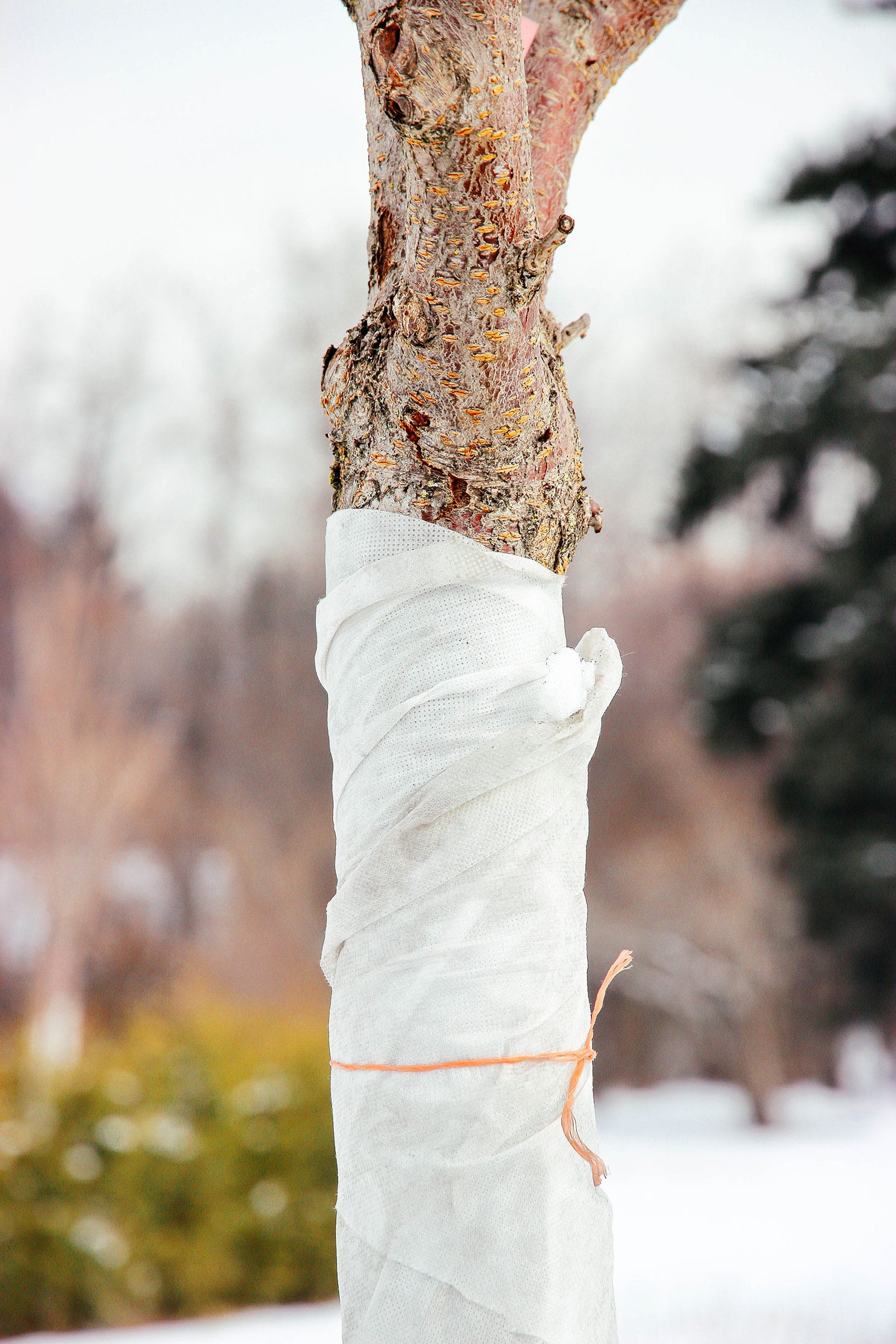
Young, thin-barked trees such as beeches, maples, redbuds, and fruit trees are susceptible to sunscald (a type of sunburn) in winter. Sunscald is often seen on the south or southwest side of a tree, where it’s most exposed to sunlight.
When the days are sunny and warm, tissue cells in the tree “wake up” and start to move water and nutrients. Once temperatures drop at night, the cells freeze and burst, causing the bark to split and creating an entry point for disease and insects.
A related winter injury is frost cracks. This happens when warm, sunny days cause the cells to warm up and expand. Once the sun sets, the outer bark temperature cools quickly but the inside of the tree stays warm, resulting in bark splitting.
Newly planted, thin-barked trees benefit from a trunk wrap in winter to protect the bark from sunscald and frost cracks. Trees should only be wrapped for the first three years after they’re planted (when their bark is still in the process of hardening).
Start wrapping your tree from the bottom up, overlapping the wrap by a third until you reach the first branch. Secure the wrap with a knot or a piece of twine (or staple the wrap to itself) to keep it from slipping down, and make sure to remove it in early spring.
An easy way to remember this is to wrap your trees by Thanksgiving and unwrap them by Easter.
Recommended
Tree trunk wraps
Tip #6: Guard against critters.

So now you’re good against cold, wind, sunscald, and frost cracks. But what about hungry critters that might enjoy feasting on your plants?
Think about it: When all other food sources are scarce, deer, rabbits, mice, voles, and gophers will likely turn to the bark on your trees and shrubs for subsistence. Even minor nibbling can eventually kill a plant, since all of its tissues (which carry water and nutrients throughout) are located immediately inside the bark.
If you have heavy pest pressure in your garden, consider adding a barrier to young trees and shrubs in winter to protect their bark. This can be as simple as a piece of 1/4- to 1/2-inch mesh hardware cloth or heavy-duty plastic hardware net (at least 24 inches wide) secured with stakes and zip-ties around the base of your tree (a few inches away from the trunk) to keep pests away.
For better protection, bury the bottom edge of the mesh at least 6 to 12 inches to deter animals from digging under it to reach the plant.
As an easier off-the-shelf option, you can also buy plastic tree guards that loosely wrap around tree trunks to protect the bark.
Recommended
Tree guards
For more cold-weather tips, take a look at my fall garden checklist for other things you can do now to help your garden thrive in spring.















